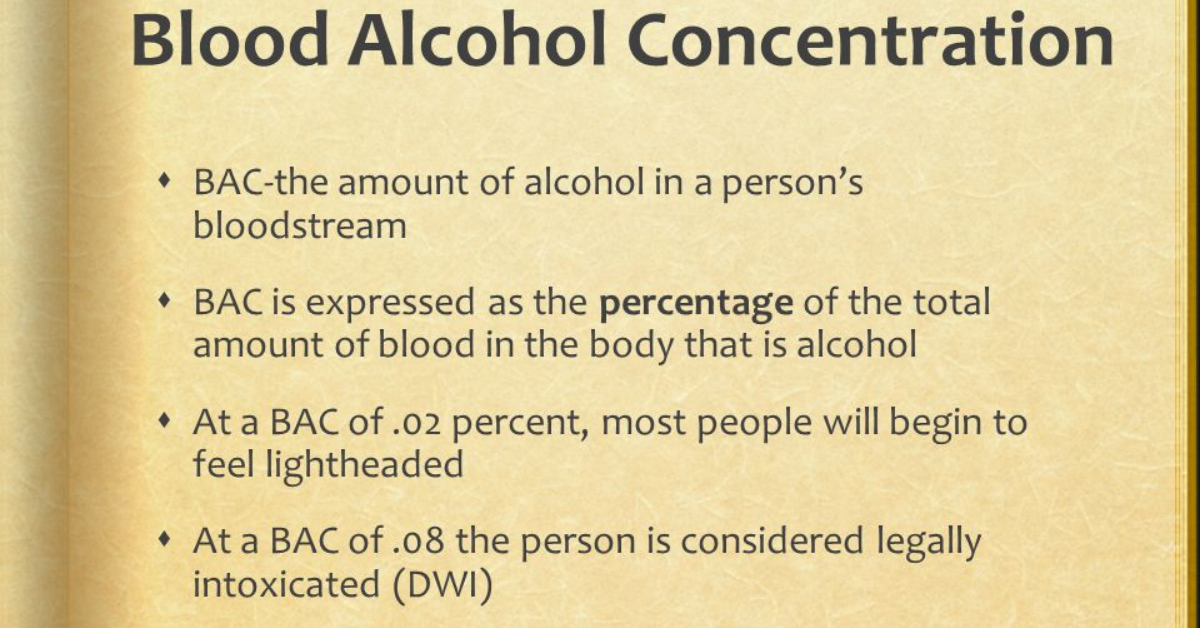Blood alcohol concentration (BAC) is a crucial metric that indicates the amount of alcohol present in a person’s bloodstream. Understanding the factors that affect BAC can help individuals make informed decisions about alcohol consumption, driving safety, and health. This article delves into the various elements that influence a person’s BAC, including biological, behavioral, and environmental factors.
What is Blood Alcohol Concentration?
Blood alcohol concentration is measured as a percentage, representing the volume of alcohol in a person’s blood. For example, a BAC of 0.08% means that there are 0.08 grams of alcohol for every 100 milliliters of blood. Many countries set legal limits for driving at 0.08% BAC, although lower limits apply for commercial drivers and certain age groups.
Key Factors Influencing Blood Alcohol Concentration
Several factors can affect an individual’s BAC, including:
1. Body Weight and Composition
A person’s weight plays a significant role in determining BAC. Heavier individuals generally have a lower BAC than lighter individuals after consuming the same amount of alcohol. This is because alcohol is distributed throughout body water, and people with higher body fat percentages typically have less water content in their bodies, resulting in higher BAC levels.
2. Gender
Gender differences can significantly affect BAC. Generally, women tend to have higher BAC levels than men after consuming the same amount of alcohol. This difference can be attributed to several physiological factors, including:
- Body Composition: Women generally have a higher percentage of body fat and a lower percentage of water than men, leading to a higher BAC for the same amount of alcohol consumed.
- Enzymatic Differences: Women may produce less of the enzyme alcohol dehydrogenase (ADH), which helps break down alcohol in the stomach before it enters the bloodstream.
3. Rate of Consumption
The speed at which alcohol is consumed has a direct impact on BAC. Drinking alcohol quickly can lead to a rapid increase in BAC, as the body has less time to metabolize the alcohol. Conversely, spreading out consumption over a longer period allows the body more time to process the alcohol, potentially resulting in a lower BAC.
4. Food Intake
Consuming food before or while drinking can significantly affect BAC. Food slows the absorption of alcohol into the bloodstream. A full stomach may delay the onset of intoxication and result in a lower peak BAC compared to drinking on an empty stomach.
5. Alcohol Content of Beverages
The type of alcoholic beverage consumed can also influence BAC. Beverages with higher alcohol content (like spirits) will lead to a quicker rise in BAC compared to those with lower alcohol content (like beer or wine). Additionally, cocktails may contain a mix of different alcohols, which can complicate the calculation of BAC.
6. Hydration Levels
Dehydration can increase BAC levels. Alcohol is a diuretic, leading to increased urine production and potential dehydration. When the body is dehydrated, the concentration of alcohol in the blood can become more pronounced, resulting in a higher BAC.
7. Medications and Health Conditions
Certain medications can interact with alcohol and influence BAC. Some medications may enhance the effects of alcohol or impair its metabolism, leading to a higher BAC. Additionally, pre-existing health conditions, particularly those affecting the liver, can affect how alcohol is processed in the body.
8. Tolerance Levels
Individuals with a higher tolerance to alcohol may not feel the effects of alcohol as strongly as those with a lower tolerance. However, a higher tolerance does not necessarily equate to a lower BAC; it simply means that the individual can consume more alcohol without experiencing the typical effects of intoxication.
9. Age
Age can also play a role in BAC. Younger individuals may metabolize alcohol differently than older adults. As people age, their bodies may become less efficient at processing alcohol, leading to higher BAC levels for the same amount of alcohol consumed.
10. Environmental Factors
External factors, such as the setting in which alcohol is consumed (e.g., a party versus a quiet dinner) and the presence of social pressures, can affect how much and how quickly individuals drink. Stressful environments may lead some to drink more rapidly, increasing their BAC.
